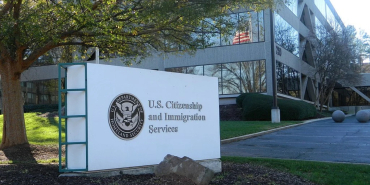US Deportations Drop to 37,660 in First Month of Trump Term, Below Biden-Era Numbers

The Trump administration is ramping up its immigration enforcement efforts, signalling a renewed focus on deportations and stricter border control measures.
This development comes as the US Senate recently approved a $340 billion bill over four years to fund border security, deportations, energy deregulation, and military spending, although internal party divisions remain regarding the inclusion of tax cuts. Newly released data from the Department of Homeland Security (DHS) reveals that the Trump administration deported 37,660 individuals during its first month in office. While this figure is notably lower than the 57,000 monthly average of deportations and returns recorded in the final year of the Biden administration, experts anticipate a surge in removals as the Trump administration implements new strategies.
According to DHS spokesperson Tricia McLaughlin, the Biden-era deportation numbers may have been inflated due to increased levels of illegal immigration. Despite campaigning on a promise to execute the largest deportation operation in the US history, the Trump administration may face challenges in surpassing the deportation rates observed during Biden’s final year, a period marked by a high volume of illegal border crossings.
In a move reflecting the administration’s emphasis on immigration enforcement, Caleb Vitello, the acting director of the US Immigration and Customs Enforcement (ICE), was recently reassigned due to underperformance, according to a Trump administration official and sources. The Trump administration is actively pursuing agreements with Guatemala, El Salvador, Panama, and Costa Rica to facilitate the acceptance of deportees from other countries. Additionally, the US military has been involved in over a dozen deportation flights to countries including Guatemala, Honduras, Panama, Ecuador, Peru, and India.
The administration has also transported Venezuelan migrants to the US naval base in Guantanamo Bay, with plans to detain up to 30,000 migrants there, drawing criticism from civil liberties groups. Adam Isacson, a security expert with the Washington Office on Latin America, suggests that the military's role in deportations could expand due to the Pentagon's extensive resources. The administration is working to facilitate the arrest of deportable migrants without criminal records and detain more individuals with final deportation orders.
The Justice Department recently issued a memo permitting ICE officers to arrest migrants at the US immigration courts, reversing a Biden-era policy. Furthermore, the US State Department recently classified Venezuela's Tren de Aragua and seven other criminal organizations as terrorist groups, potentially making alleged gang members and individuals with ties to these groups deportable under the US immigration law. The Trump administration is also collaborating with ICE’s investigative branch, the Justice Department, the IRS, and the State Department to assist with arrests and investigations.
Jessica Vaughan, policy director at the Center for Immigration Studies, suggests these investigative agents could target employers hiring undocumented workers and individuals with final deportation orders. ICE arrested approximately 14,000 people during Trump’s first three weeks in office, translating to roughly 667 arrests per day—double the previous year's average. However, these figures are projected to result in around 250,000 annual arrests rather than millions.
Despite rising arrest numbers, ICE's detention capacity remains a constraint. As of mid-February, ICE held around 41,100 detainees, with funding for 41,500. Of the 19,000 arrested by ICE, approximately 2,800 had no criminal record, an increase from 858 in mid-January, before Trump assumed office.














Add new comment